Abstract
Introduction: Ring melanoma is a rare form of uveal melanomas that is characterized by circumferential growth pattern. The diagnosis of ring melanomas may be delayed because of their initial hidden location and non-specific symptoms. In addition, ring melanomas may be misdiagnosed and treated as refractory glaucoma or retinal detachment because of their atypical presentation. Such tumours are usually large and extensive at the time of diagnosis, thus associated with worse prognosis.
Patient presentation: This case report presents a case of a 70-year-old female presenting with blurring of vision of 1 month duration. Examination revealed a pigmented subconjunctival mass just inferior to the lower limbus that the patient reported to appear 1 year before. Dilated fundus and ultrasonographic examination were suggestive of ciliochoroidal melanoma with associated retinal detachment.
Management and outcome: The patient underwent enucleation, and histopathology confirmed the diagnosis of ciliochoroidal melanoma of mixed cell type.
Conclusion and Contribution: This article aims to report a rare and advanced case of a deadly tumour emphasizing on the importance of routine fundus examination in patients over the age of 40 years.
Keywords: uveal; ciliary body; choroid; malignant melanoma; extraocular extension.
Introduction
Uveal melanoma is the most common primary intraocular malignancy in adults.1 The mean incidence of uveal melanomas ranges from 0.2 to 5.1 cases per million per year.2,3 Uveal melanomas originate from the melanocytes in any part of the uveal tract. The most common site for uveal melanomas is the choroid (90%), followed by the ciliary body (6%), and the iris (4%).2
Ring melanoma is a rare variant of diffuse uveal melanomas that is characterized by circumferential growth pattern of the melanoma within the eye.4 It can affect the choroid, ciliary body, iris or anterior chamber angle. Ring melanomas represent only 0.3% of all uveal melanomas.4 Ring melanomas are usually advanced at the time of diagnosis because of their occult nature and atypical presentation.4,5 Patients with ring melanoma may present with blurring of vision, visual field alterations, glaucoma, retinal detachment or with extraocular extension.4 There are reports of cases with ring melanoma that were initially misdiagnosed and treated as retinal detachment or glaucoma.6,7
In this study, we report a rare case of advanced ring melanoma of ciliary body and choroid in a 70-year-old female patient.
Ethical considerations
Ethical clearance to conduct this study was obtained from the Assiut University Faculty of Medicine Institutional Review Board (No. 04-2023-300143).
Case report
A 70-year-old female patient presented to our outpatient clinic with acute painless diminution of vision in her left eye of 1 month duration. The patient also complained of a pigmented subconjunctival lesion that appeared in her left eye 1 year before but showed rapid growth in the past 6 months.
Ophthalmic examination of the left eye showed that the visual acuity was limited to hand motion with good projection of light. There was a pigmented subconjunctival mass measuring 13 mm × 6 mm in diameter just inferior to the lower limbus (Figure 1a). The intraocular pressure (IOP) was 22 mmHg and gonioscopy revealed involvement of the inferior portion of the angle by the pigmented mass. Slit lamp examination showed a retro-lenticular pigmented mass with pigment deposits on the posterior lens capsule (Figure 1a). Fundus examination revealed lower retinal detachment with underlying solid dark brown mass (Figure 2). The right eye examination was unremarkable apart from senile nuclear cataract, and the best corrected visual acuity was 6/60.
 |
FIGURE 1: (a) Subconjunctival pigmented mass inferior to the lower limbus. (b) Retrolenticular pigmented mass with pigment deposits on the posterior lens capsule. |
|
 |
FIGURE 2: Fundus photograph of left eye showing lower retinal detachment (RD) with underlying pigmented mass. |
|
B scan ultrasonography of the left eye revealed a large multinodular uveal mass. The anterior (ciliochoroidal) portion of the mass extended circumferentially and involved the entire ciliary body and anterior choroid 360 degrees. The mass was 10 mm thick and measured up to 17 mm in basal diameter. The posterior (choroidal) portion was dome-shaped and localized inferiorly. The posterior mass measured 16 mm in basal diameter and 12 mm in thickness. Both portions exhibited intermediate internal reflectivity and orbital shadowing (Figure 3).
 |
FIGURE 3: B scan ultrasonography showing two uveal masses. (a) Axial scan showing dome-shaped inferior choroidal mass, (b) Lower scan showing multinodular mass, (c) Nasal scan showing large ciliochoroidal mass with 17 mm basal diameter and orbit shadowing, (d) Temporal scan showing multinodular mass. |
|
Generally, the patient was known to be diabetic and hypertensive. She gave a history of stroke with right-sided hemiplegia 1 year ago, which has much improved. Systemic work up including whole-body magnetic resonance imaging (MRI), abdominal ultrasonography, and liver function tests revealed no evidence of distant metastasis.
Based on the American Joint Cancer Committee classification, the tumour was classified as T4e because of the large extraocular extension. The patient underwent enucleation and histopathological examination revealed melanoma of mixed cell type (Figure 4).
 |
FIGURE 4: Histopathological sample showing ciliochoroidal melanoma of mixed cell type (spindle and epithelioid cells) H&E 160x. |
|
Following surgery, the patient was regularly evaluated for local recurrence and distant metastasis over 6 months. There was no evidence of local recurrence or distant metastasis till the last follow-up.
Discussion
Ring melanoma of the ciliary body represents a rare entity with few published reports in the literature. Diagnosis of these cases is usually delayed because of the hidden location and non-specific associated symptoms.4,5 In addition, up to 13% of cases with ring melanoma are diagnosed and treated as glaucoma before suspecting malignancy.5,8 In our case, the pigmented subconjunctival mass was reported to appear 1 year before presentation indicating a delayed diagnosis for at least 12 months.
Diagnosis of ciliochoroidal melanoma is based on clinical, non-invasive diagnostic techniques followed by histopathological diagnosis. Clinical diagnosis is mainly based on the detection of a solid dark greyish mass. Other clinical findings include exudative retinal detachment, intraocular haemorrhage, sentinel episcleral vessels and extraocular extension.1,2 Non-invasive diagnostic tools include transillumination, gonioscopy, ultrasonography and ultrasonic biomicroscopy.1,4 Histopathological examination is the definite diagnostic tool. Samples can be taken by fine needle aspiration, tumour resection or enucleation. Spindle cell tumour has the best prognosis followed by mixed cell type, while epithelioid cell melanoma has the worst prognosis.1 In our patient, the diagnosis was based on the detection of solid pigmented mass on fundus examination, anterior chamber angle infiltration, extrascleral extension and the characteristic ultrasonographic appearance of the tumor. Subsequently, the diagnosis was confirmed by histopathological examination of the enucleated sample.
Possible differential diagnosis for our case is intraocular extension of conjunctival melanoma.9 However, this diagnosis was excluded based on the extensive intraocular involvement and lack of involvement of the conjunctival epithelium.
Uveal melanomas may present as a localized nodular mass or diffuse growth.1,2 In our reported case, the tumour exhibited both growth patterns with an anterior diffuse circumferentially spreading portion and a posterior dome-shaped nodular portion.
The main treatment modality for ring melanoma is enucleation. This is because of the diffuse nature of the tumour and large size at time of diagnosis.4,8 Brachytherapy may be offered as a possible treatment option specially to patients who refuse enucleation. However, brachytherapy is associated with higher risk of local recurrence.10
The prognosis of ring melanoma is worse than the other types of uveal melanoma. Demirci et al. reported that distant metastasis occurred in 52% of cases at mean 55-month follow-up.4 This poor prognosis was attributed to the delayed presentation, large tumour size, mixed cell type and high rate of extrascleral extension.4 Ciliary body melanomas have worse prognosis compared to iris and choroidal melanomas with higher 5-year metastatic rate. This may be because of larger tumour dimensions, rich blood supply of ciliary body, diffuse growth pattern, higher risk of extraocular extension and more malignant cytological features.1,4 The most common site of distant metastasis is the liver.1,11 The tumour in our reported case had several poor prognostic features including large size, ciliary body involvement, ring-shaped growth pattern, extrascleral extension and mixed cell type. The patient is being regularly evaluated for local recurrence and distant metastasis. Up till now (6 months after enucleation), no signs of recurrence or metastasis were detected.
In conclusion, we present a rare case of advanced ciliochoroidal melanoma that demonstrated both diffuse and nodular growth patterns. The patient presented with blurring of vision and a dark pigmented subconjunctival mass. The presentation was delayed for at least 12 months from the onset. Therefore, it is recommended to add fundus examination to the routine checkup in patients over 40 years. It is also recommended to perform gonioscopy and dilated fundus examination in patients with unilateral refractory glaucoma.
Acknowledgements
Competing interests
The authors have declared that no competing interest exists.
Authors’ contributions
S.A. was responsible for data collection, analysis, interpretation and manuscript writing. S.S.K. examined histopathological samples.
Funding information
This research received no specific grant from any funding agency in the public, commercial or not-for-profit sectors.
Data availability
All data are included in this published article. No additional or new data are available.
Disclaimer
The views and opinions expressed in this article are those of the authors and do not necessarily reflect the official policy or position of any affiliated agency of the authors.
References
- Kaliki S, Shields CL. Uveal melanoma: Relatively rare but deadly cancer. Eye. 2017;31:241–257. https://doi.org/10.1038/eye.2016.275
- Singh AD, Turell ME, Topham AK. Uveal melanoma: Trends in incidence, treatment, and survival. Ophthalmology. 2011;118(9):1881–1885. https://doi.org/10.1016/j.ophtha.2011.01.040
- Park SJ, Oh CM, Kim BW, et al. Nationwide incidence of ocular melanoma in South Korea by using the National Cancer Registry Database (1999–2011). Invest Ophthalmol Vis Sci. 2015;56:4719–4724. https://doi.org/10.1167/iovs.15-16532
- Demirci H, Shields CL, Shields JA, et al. Ring melanoma of the ciliary body: Report on twenty-three patients. Retina. 2002;22(6):698–706; quiz 852-693. https://doi.org/10.1097/00006982-200212000-00003
- Vasquez LM, Pavlin CJ, McGowan H, et al. Ring melanoma of the ciliary body: Clinical and ultrasound biomicroscopic characteristics. Can J Ophthalmol. 2008;43(2):229–233. https://doi.org/10.3129/i08-025
- Rockwell PA. Annular malignant melanoma of the iris and ciliary body; report of a case and summary of the literature. Am J Ophthalmol. 1952;35(12):1806–1810. https://doi.org/10.1016/0002-9394(52)92021-7
- Zhao M, Mu Y, Dang Y, et al. Secondary glaucoma as initial manifestation of ring melanoma: A case report and review of literature. Int J Clin Exp Pathol. 2014;7:8163–8169.
- Demirci H, Shields CL, Shields JA, et al. Ring melanoma of the anterior chamber angle: A report of fourteen cases. Am J Ophthalmol. 2001;132(3):336–342. https://doi.org/10.1016/S0002-9394(01)01051-0
- Sandinha T, Russell H, Kemp E, et al. Malignant melanoma of the conjunctiva with intraocular extension: A clinicopathological study of three cases. Graefes Arch Clin Exp Ophthalmol. 2007;245:431–436. https://doi.org/10.1007/s00417-006-0401-8
- Prasuhn M, Freitag JC, Luken S, et al. Case report: GNAQ- and SF3B1 mutations in an aggressive case of relapsing uveal ring melanoma. Front Oncol. 2022;12:873252. https://doi.org/10.3389/fonc.2022.873252
- Lemaitre S, Anguita R, Arora AK. Incidental discovery of cilio-choroidal melanoma following initial presentation of liver metastases. J Fr Ophtalmol. 2021;44(9):e527–e528. https://doi.org/10.1016/j.jfo.2021.01.009
|